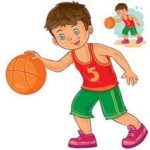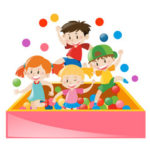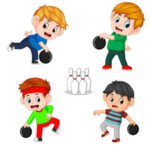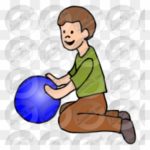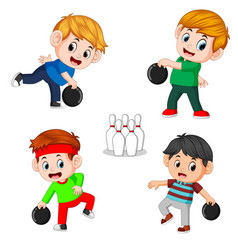
by Neetu | Jun 24, 2020 | Manthan
Aim
To have students practice the underhand motion of bowling.
Activity cues: “Reach back”, “Arm close to the side of body”, “Step with the opposite foot”
Equipment Require
Plastic 16-20 oz. bottles or bowling pins, Small foam balls, Poly spots
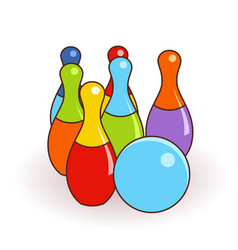
Description
Young children get excited about knocking bowling pins over with a ball. They have very little concern about scoring or other competitive aspects of the formal game. Here are ways to present the activity and two ways to organize the pin set-up.
- Related to both pin setup and presentation
In a traditional sense, the teacher can show children how to set up pins in a conventional manner. Ask them to count the number of pins in each row. First row “1,” second row “1, 2,” third row “1, 2, 3,” and fourth row “1, 2, 3, 4”; then confirm that there is a total of ten pins by counting them all. This integrates numeric concepts into the p.e. activity. If the teacher has placed small round stickers on the floor, younger students will have an easier time putting pins in the same arrangement each time.
In order to maximize participation, this would need to be presented in the context of a number of throwing stations. Otherwise, the teacher would need a lot of pins and balls to keep the group size small.
- Pin setup
As an alternative, ask students to design their own pin arrangements and see how the different arrangements affect the way the pins fall.
- Presentation
It is preferable that students work in small groups in order to maximize participation. For example, there might be one student bowling while one or two others set up the pins. Students rotate positions. Since the emphasis is on the underhand throw, (as opposed to the number of pins knocked down), the teacher might use less than ten pins in order to accommodate multiple stations. Very young children will perceive a challenge when throwing at maybe 3 pins from an appropriate distance (appropriate distance maybe 5-7 giant steps away from the roller of the ball and it should not be a regulation size bowling alley length). And, preschoolers can still experiment with various pin arrangements even with only three pins.
For either presentation, each time the students set up their pins, they should return to a poly spot on the floor to make their underhand throw. Initially, the teacher should place more emphasis on the arm swing than other aspects of the throw. The arm swing should begin with a “reach back”, swing forward “close to the body”, and release the ball at a low level (“no bounce”) (remembering to give only one cue at a time). “Step with the opposite foot” may be an appropriate cue only for students who are more developmentally advanced.
Teaching Suggestions:
- For students that easily knock down their pins, challenge them to move their spot back a step after each successful underhand throw.
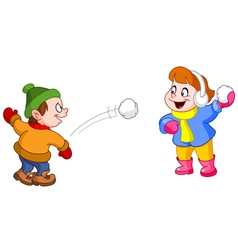
by Neetu | Jun 24, 2020 | Fitness Activity
Aim
This activity will give the students the opportunity to learn and practice the overhand throw at a target.
Activity cues: Depending upon the skill level and experience of children use appropriate throwing cues (see PE Central throwing cues
Equipment Requipme
Cut snowman targets from large sections of cardboard and decorate by having students draw and paint on the cutouts. Tape snowmen on wall Plastic grocery bags (rolled into balls and taped) are used for snowballs. Use a restraining line, such as a jump rope, to keep students about 5’away from the target.
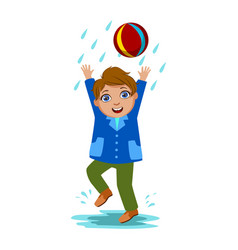
Description
This activity brings the fun of throwing snowballs inside where it is warm, and no one gets cold! Students throw the “snowballs” at the snowman to see if they can hit different parts of the target.
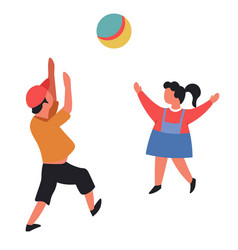
by Neetu | Jun 24, 2020 | Fitness Activity
Aim
To provide young children with the opportunity to develop catching skills using a launch board.
Equipment Require
A launch board and a small ball, beanbag, or beachball for each child.
Description
A great way to help young children achieve catching success is to use a launch board. When a child steps on one end of the board a beanbag on the other end flies into the air directly in front of the child. This gives the child a better opportunity to catch the object.
Teacher Instructions
“Place your beanbag on the low end of the board. Go to the other end, get your hands ready to catch by holding them out in front of you, then raise your foot and stomp at the end of the board. As the beanbag flies into the air in front of you, clasp your hands around the beanbag and catch it. You may also want to hug the beanbag to your body”
As children get better at catching they can be challenged with more difficult tasks. “See how high you can make the beanbag go and still catch it.” Or, “See how many times you can clap your hands while the beanbag is in the air and still catch it.”
Teaching Suggestions
Most children, at first, will have trouble coordinating the acts of picking up the foot and stomping on the board. They may stomp in the wrong place or miss completely. It helps to have them practice this without an object first
These make a lot of noise so either put felt on the bottom of both ends or tell your classroom teachers to wear earplugs!!
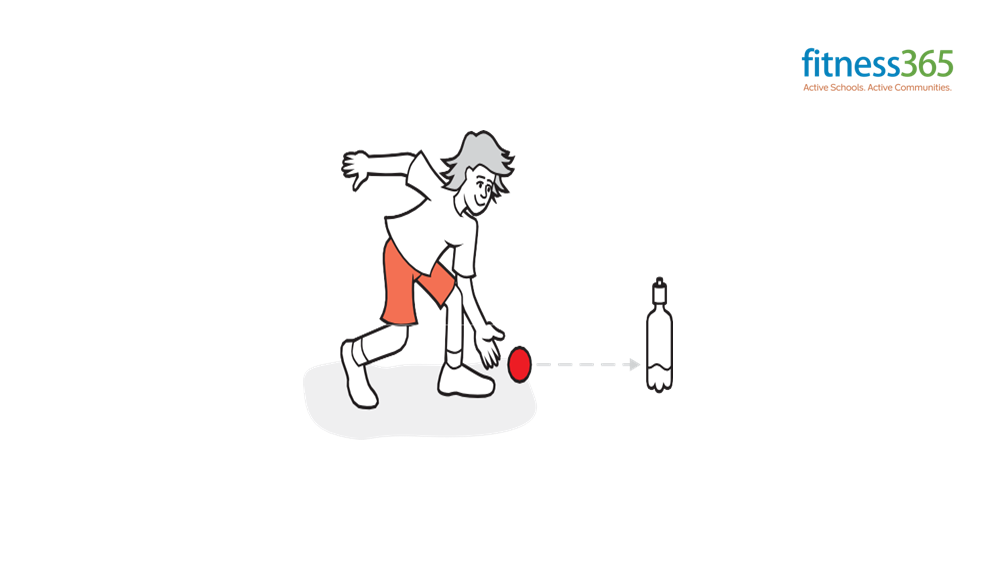
by Neetu | Jun 4, 2020 | Fitness Activity
Movement skills/concepts
Rolling a ball along the ground, at a target, in different pathways and directions, and relationships (with others).
Set-up
- Small and large balls, cones, hoops, skittles, ropes and chairs.
- Children work in pairs, threes and fives, with one ball per pair or group, in a smooth, hard area.
Activity
- roll the ball to your partner through a target or obstacle, (e.g. between two cones, through a hoop, at a skittle, at another ball, along a line, under a chain, between ropes)
- take turns at rolling the ball to a wall target
- roll the ball to your partner, varying the distance between 3 and 10 metres
- roll it to your partner, then change places
- roll it as many times as you can in 30 seconds
In threes Can you …?
- roll the ball for the middle child to jump over
- play ‘piggy in the middle’, in which the middle player attempts to intercept the rolled ball
In fives
- roll the ball around/across a circle towards your partner or other players
- roll it to hit a skittle in the centre of a circle
- have one player in the centre who rolls the ball to others in turn
- holding a small ball in the fingers, held beneath a large ball with fingers spread
- stepping with an opposite foot into a roll
- long arm action, following through
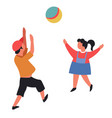
by Neetu | Jun 4, 2020 | Fitness Activity
Movement skills/concepts
Catching a variety of objects, catching while moving in different pathways and at different levels and speeds
.
Set-up
A variety of balls (small, large, soft, hard, spiky) and objects (beanbags, quoits). Children, with a ball/object each, are spread out in a defined hard flat area.
Activity
- describe how the ball/object feels – think of the texture/hardness
- roll the ball/object over your body – up and down, round and round, down a leg or arm
- roll it along the ground slowly, run round in front of it and pick it up
- holding the ball/object in a two-hand ‘nest’, drop it and catch it while standing/ kneeling/walking along
- drop the ball/object from one hand and catch it in the two-hand ‘nest’
- throw the ball/object up, a little higher each time, and catch it – how high can you go?
- throw the ball/object up with one hand and catch it in the two-hand ‘nest’
- bounce or throw the ball/object and clap your hands then catch it
- see which ways you can catch as you move around (e.g. one hand and then the other)
- relaxed fingers forming a ‘nest’ about the size of the ball/object
- eyes on the ball/object
- reaching for the ball/object









